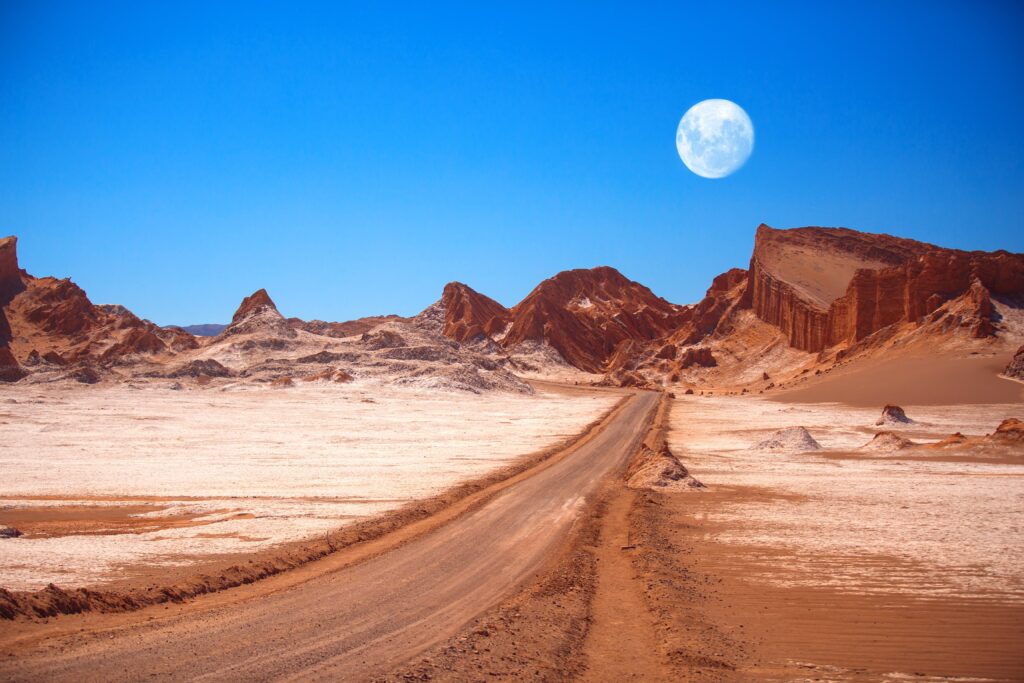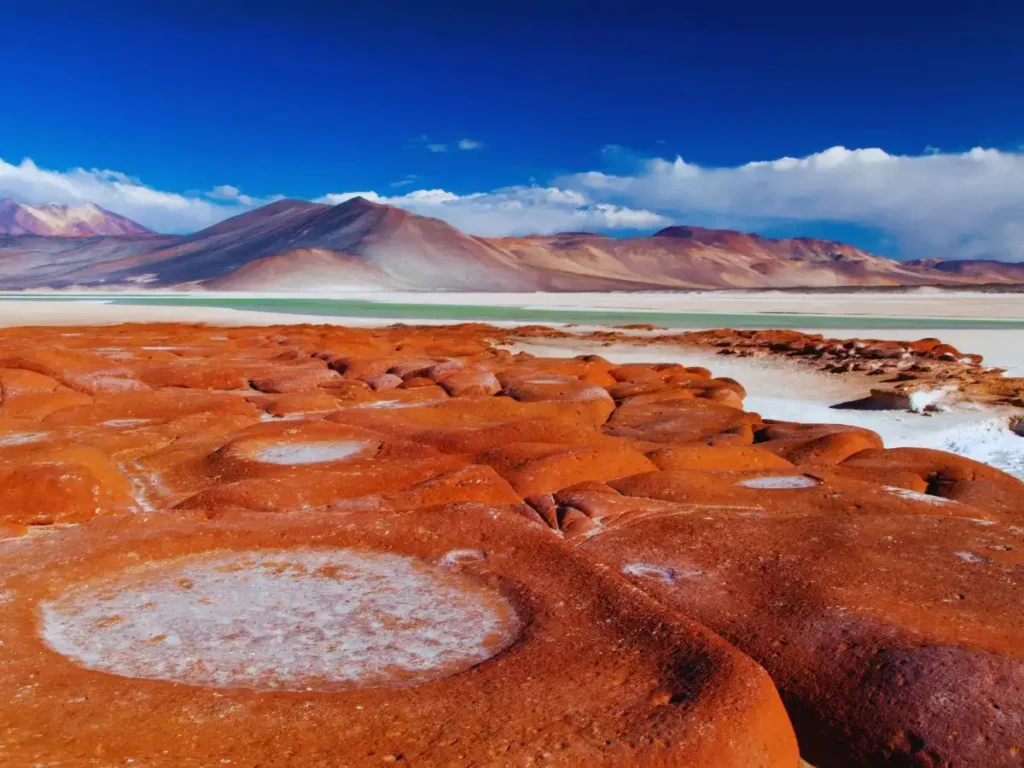Barren, windswept, and impossibly surreal, the Atacama Desert in northern Chile feels like a different planet. It’s no surprise that NASA has used this otherworldly terrain to test Mars rovers. With its rusty red rocks, salt-encrusted plains, and silence so vast it echoes in your mind, the Atacama is often described as the closest thing to Mars on Earth. But unlike the Red Planet, the Atacama is very much alive—with ancient history, celestial wonders, and a stark, haunting beauty that defies expectations.
The Driest Place on Earth
The Atacama holds a stark title: it is the driest non-polar desert in the world. Some weather stations in the region have never recorded rainfall, and on average, the desert receives less than 1 mm of rain annually. Parts of it are so arid that no plants or animals are able to survive, and in some stretches, no significant precipitation has occurred in hundreds of years.
This extreme dryness has created a unique geological museum. Salt flats, jagged rock formations, and wind-carved canyons dominate the landscape, forming a kaleidoscope of textures and colors. The soil is so parched and nutrient-starved that it’s nearly sterile—conditions that eerily mimic those found on Mars.
Valle de la Luna: Earth’s Red Planet

Perhaps the most iconic corner of the Atacama is Valle de la Luna (Valley of the Moon), a place so named for its eerie resemblance to lunar and Martian landscapes. Located just west of the town of San Pedro de Atacama, this region offers an overwhelming sensory experience. Massive sand dunes rise beside jagged ridges of salt-covered stone. As the sun sets, the desert ignites with hues of crimson, gold, and deep purple—colors so vibrant and alien they seem digitally enhanced.
Wandering Valle de la Luna feels like trespassing on another world. The silence is almost sacred, broken only by the sound of your own footsteps and the whisper of wind over rock. There’s a sense of solitude here that few places on Earth can match.
Stargazing in the World’s Clearest Skies
As day gives way to night, the Atacama reveals another secret: the skies. Thanks to its high altitude, virtually non-existent light pollution, and bone-dry air, the Atacama Desert is one of the best places on the planet for stargazing. The Milky Way blazes across the sky like a cosmic river, and constellations seem so close you could reach out and touch them.
The region is home to some of the world’s most advanced observatories, including ALMA (Atacama Large Millimeter/submillimeter Array), which peers deep into the origins of the universe. But you don’t need a telescope to be awestruck. Just lie on your back in the open desert, and you’ll see more stars in a single night than many do in a lifetime.
Life in the Extreme

Despite the brutal climate, life exists in the Atacama—resilient, adapted, and often unseen. In places where a bit of moisture seeps in from underground springs or coastal fog, hardy plants like llareta (a cushiony, bright green shrub that can live for thousands of years) take root. Microbial life forms have also been discovered in the desert’s salt rocks and soil, sparking interest from astrobiologists who believe similar organisms might survive on Mars.
Human life, too, has found a way. The Atacama has been home to indigenous groups such as the Atacameño and Aymara for centuries. In oases like San Pedro, traditional adobe architecture and pre-Columbian heritage coexist with modern tourism. Ancient petroglyphs, stone dwellings, and ceremonial altars dot the desert, silently telling stories of endurance and ingenuity.
A Desert That Blooms
Perhaps the most miraculous display of life in the Atacama comes every few years, when conditions are just right. Following an exceptionally rare bout of rainfall, the desert floor erupts into color—a phenomenon known as the desierto florido, or “flowering desert.” Carpets of pink, yellow, and purple wildflowers blanket the sands, transforming one of the harshest environments on Earth into a fleeting paradise.
This blooming, which usually occurs between September and November, is a reminder that even the driest places hold the potential for beauty and renewal.
Adventure and Reflection

Exploring the Atacama isn’t just a physical journey—it’s a mental and emotional one. The landscape strips things down to their essence: wind, rock, silence, sky. Travelers come for the alien terrain and stay for the sense of introspection it invites. Whether biking across salt flats, floating in the hyper-saline waters of Laguna Cejar, or watching flamingos wade through the shimmering Salar de Atacama, each experience feels personal and profound.
It’s the kind of place that doesn’t just make you feel small—it makes you feel connected. To the Earth. To time. To the stars above and the secrets locked in the red dust below your feet.
Final Thoughts
The Atacama Desert may look like Mars, but it offers a lesson that’s deeply terrestrial. It reminds us of nature’s extremes, of life’s ability to persist, and of how much wonder remains on our own planet. In a world full of noise and chaos, the Atacama offers silence—and in that silence, the chance to truly listen.
Whether you’re an adventurer, an astronomer, or simply a seeker of the extraordinary, the Atacama Desert is more than a place to visit. It’s a place to remember. To feel the pulse of a planet that still has wild, unexplored corners. And to realize that sometimes, the most alien landscapes are not in the stars, but right here on Earth.
